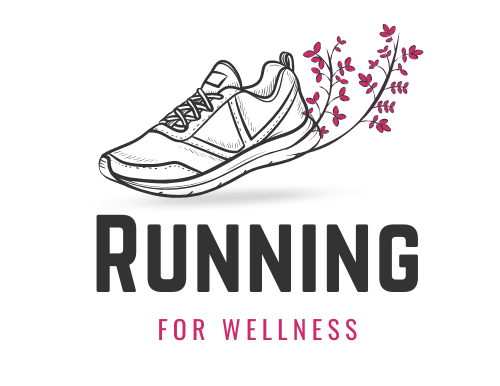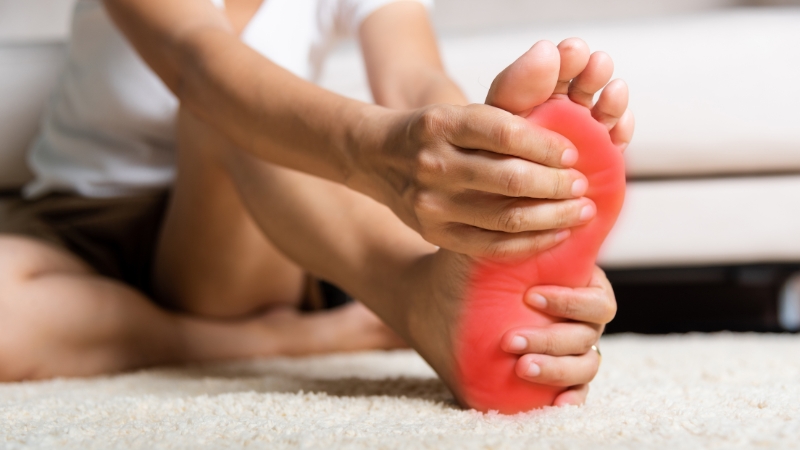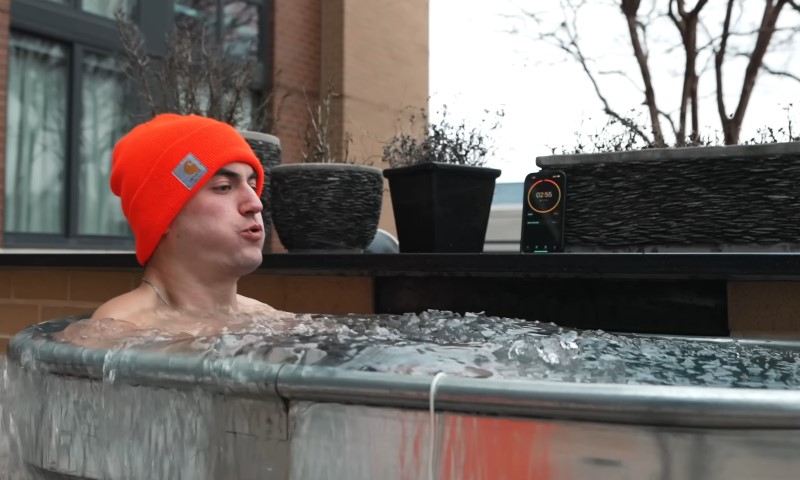If you’re an avid runner or even a casual jogger, plantar fasciitis—that sharp, stabbing heel pain—can feel like a sudden halt to your progress.
But here’s the concrete truth: while plantar fasciitis is a frustrating and sometimes chronic condition, it doesn’t necessarily mean you need to hang up your running shoes forever.
Instead, managing it effectively comes down to smart taping strategies, the right footwear, and targeted recovery approaches.
Table of Contents
ToggleWhat Exactly Happens in Your Foot?
Plantar fasciitis occurs when the plantar fascia, a thick band of connective tissue that runs along the bottom of your foot, becomes irritated or inflamed.
This structure absorbs shock and supports the arch, but repetitive stress from running or high-impact activities can cause microtears.
These microtears generate localized inflammation and sharp pain, usually felt in the heel or along the arch, especially after prolonged periods of rest, such as getting out of bed in the morning.
Key Characteristics of Plantar Fasciitis
When ignored, plantar fasciitis can progress to chronic pain that disrupts daily activities, not just running. However, when caught early and managed with evidence-based strategies, most runners can continue training safely. A post shared by Paul Macaulay🦶 Myfootdr 🇸🇬 Senior Podiatrist 👨⚕️ (@paulthepodiatrist) Taping helps by stabilizing the arch, reducing load on the plantar fascia, and limiting excessive foot pronation. The key is to apply tape that mimics the natural tension of the fascia and supports the arch during movement. This method can provide immediate symptom relief, but it’s most effective when combined with the right shoes and recovery plan. Not all running shoes are created equal when it comes to plantar fasciitis. The goal is to reduce heel impact, stabilize the foot, and provide ample arch support. Below is a detailed table comparing features across shoe types commonly recommended for runners with plantar fasciitis. The key to running with plantar fasciitis is balancing activity with recovery. Ignoring the condition leads to worsening pain, but total rest may result in muscle deconditioning and further stiffness. Instead, combine targeted stretches, strengthening, cross-training, and gradual mileage progression. If pain persists despite conservative strategies, consider modifying your routine: While taping and supportive shoes provide immediate relief, addressing the root cause of plantar fasciitis requires targeted stretching and strengthening exercises. These movements not only alleviate tension in the plantar fascia but also build foot and lower-leg strength to prevent recurrence. Below are essential exercises with detailed instructions. These exercises should be performed daily, with emphasis on slow, controlled movements to avoid irritation. Avoid bouncing or jerking motions, as they may worsen symptoms. Gradually increase intensity and resistance as strength improves, and combine these with taping and supportive footwear for comprehensive management of plantar fasciitis. Running with plantar fasciitis isn’t an all-or-nothing scenario. By mastering effective taping techniques, choosing supportive shoes that suit your foot mechanics, and following a progressive recovery plan, you can continue to log miles while managing and eventually overcoming plantar fasciitis. The strategies outlined here provide practical, evidence-based steps to not only stay active but also strengthen your foot and lower leg for long-term resilience. Remember, the journey is gradual. Listen to your body, adjust as needed, and stay consistent with your recovery plan. With the right approach, you can keep running—and do it pain-free.
Aspect
Detail
Pain Location
Typically, under the heel, may radiate along the arch
Pain Pattern
Sharp pain upon standing, dull ache during activity
Aggravating Factors
High-impact activities, inadequate footwear, and tight calves
Alleviating Factors
Stretching, rest, supportive shoes, and proper taping
Taping Techniques: How to Support the Plantar Fascia
Taping Procedure: Low-Dye Taping Method
Step
Description
1
Start with clean, dry skin; use hypoallergenic tape to prevent irritation
2
Apply an anchor strip around the ball of the foot, just behind the toes
3
Add a strip from the outside of the foot, under the arch, and secure it around the inside of the heel
4
Repeat with 2–3 overlapping strips to create firm support
5
Add horizontal strips across the midfoot to lock in the support
6
Secure the tape around the arch to hold tension; ensure no wrinkles or tight spots.
Choosing the Right Running Shoes: Essential Features for Plantar Fasciitis
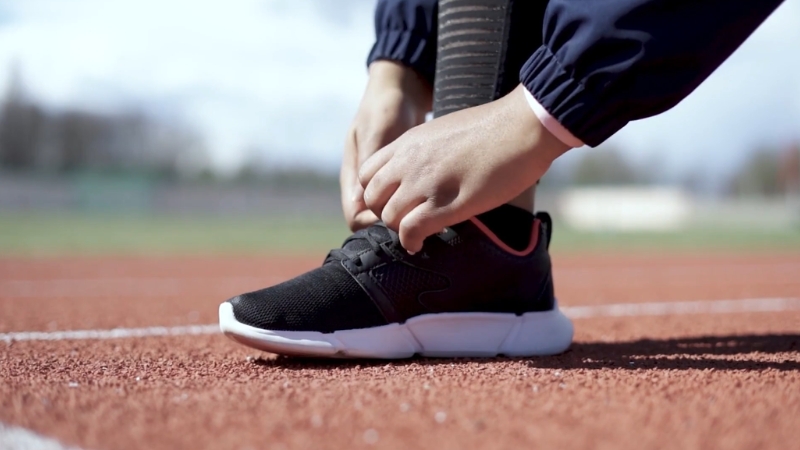
Comparative Table of Running Shoes for Plantar Fasciitis
Shoe Type
Cushioning
Arch Support
Heel-to-Toe Drop
Stability Features
Recommended Use
Maximalist Cushioned
High (e.g., EVA foam)
Moderate
4–8 mm
Rocker sole, wide base
Long-distance runs, recovery days
Motion-Control
Moderate
High
8–12 mm
Firm medial post, heel counter
Severe overpronation, flat feet
Neutral Cushioned
High
Moderate
8–12 mm
Soft midsole, flexible forefoot
Mild plantar fasciitis, high arches
Stability Shoes
Moderate
High
8–10 mm
Dual-density foam, midfoot shank
Moderate overpronation, daily runs
Recovery Strategies: How to Promote Healing While Staying Active
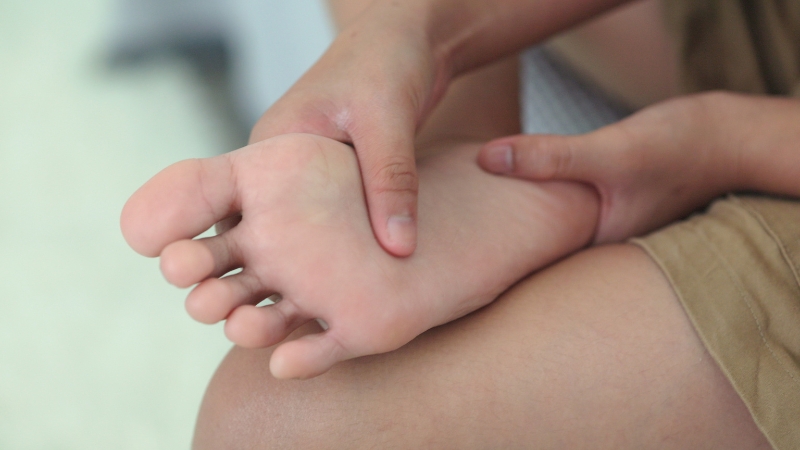
Recovery Timeline & Practical Strategies
Time Frame
Key Focus
Specific Strategies
Days 1–7
Acute phase
Ice massage for 10 mins 3x daily; gentle calf stretches; limit running; use taping
Weeks 2–4
Subacute phase
Gradual reintroduction of low-impact cross-training (cycling, swimming); calf and foot strengthening (e.g., towel curls)
Weeks 5–8
Recovery and progression
Slowly increase running distance; incorporate dynamic stretches; use foam rolling for calves and plantar fascia.
Ongoing
Maintenance
Alternate high and low-impact days; regular stretching; continue using supportive shoes
When to Modify Your Running Routine
Practical Stretching and Strengthening Exercises

Key Exercises
Exercise
Purpose
Detailed Instructions
Calf Stretch
Loosen calf muscles to reduce Achilles tendon tension and fascia strain
Stand facing a wall, place both hands at shoulder height. Step one foot back, keeping the heel flat and the knee straight. Lean forward, bending the front knee while keeping the back leg straight and heel grounded. Hold for 30 seconds. Repeat with the opposite leg. Perform 3 repetitions per side.
Plantar Fascia Stretch
Directly stretches the fascia, reducing tightness and microtears
Sit with one leg crossed over the opposite knee. Hold the toes of the affected foot and gently pull them back toward the shin. You should feel a stretch along the arch and heel. Hold for 30 seconds. Repeat 3 times.
Towel Curls
Strengthen the small intrinsic foot muscles supporting the arch
Sit in a chair with a small towel placed flat under the foot. Using only the toes, scrunch the towel toward you, creating small folds. Release and repeat until the towel is fully scrunched. Do 2–3 sets per foot. Add a lightweight on the towel for progression.
Eccentric Calf Raises
Build calf and plantar fascia strength, encouraging controlled lengthening
Stand on a step with the heels extending off the edge. Rise onto both toes. Slowly lower one heel below the step level, using the other foot for support. Return to the starting position and repeat. Perform 3 sets of 12 repetitions per side.
Conclusion: A Path to Pain-Free Running
Related Posts:
